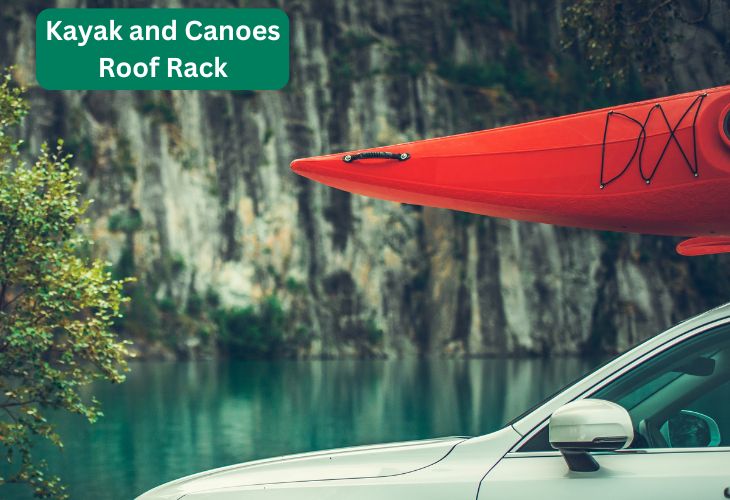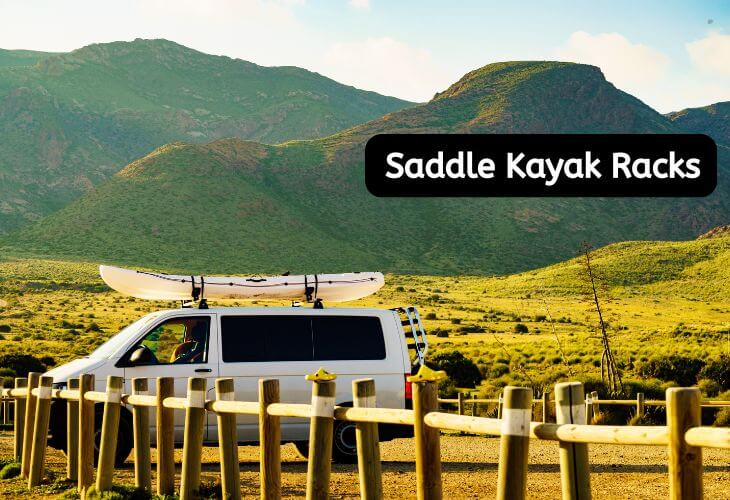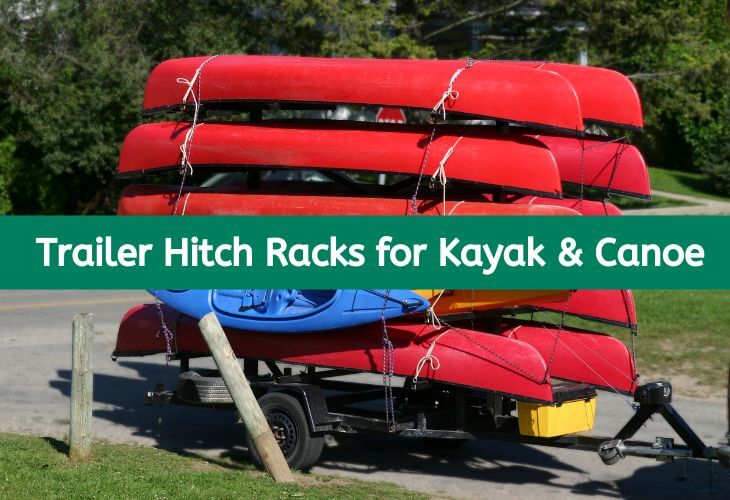Whether you’re a weekend warrior or a dedicated paddling enthusiast, choosing the right roof rack for your kayak or canoe is crucial for safe and convenient transportation.
Have you stood in your driveway, staring at your kayak and wondering, “How am I going to get this thing to the water?” Been there, done that. Let’s talk about Roof Racks for Kayak and Canoes. Why? Because they’re your ticket to worry-free adventures.
Think about it:
- You want your kayak to arrive safely
- You don’t want scratches on your car
- You definitely don’t want your kayak flying off on the highway
A solid roof rack solves all of these problems. Tried using bungee cords and a pool noodle? Don’t. That lesson has been learnt in the hard way.
Your kayak deserves better. You deserve better.
A good rack will:
- Keep your kayak secure
- Protect your vehicle
- Make loading easier
- Give you peace of mind
Imagine, you drove three hours to the lake. No wobbling. No weird noises. Just smooth sailing (well, driving). You know what, your roof rack made all the difference.
Want to know the best part? A quality roof rack turns transport from a headache into a breeze. Literally.
Are you tired of:
- Struggling to lift your kayak?
- Worrying about damage?
- Asking friends for help?
Time to get serious about your rack game.
Let’s find you the perfect roof rack selecting, installing, and using for your watercraft. Ready? Because your next paddling adventure is waiting!
Topics Analyzed
- Key Takeaways
- Types of Roof Racks: Finding Your Perfect Match
- Essential Considerations When Choosing Your Roof Rack
- Safety First: Essential Features for Secure Transport
- Top Brands in the Kayak Rack Market
- Expert Tips for Kayak Transportation
- Maintenance and Care
- Accessories to Enhance Your Setup
- Common Mistakes to Avoid on Roof Racks for Kayak and Canoes
- Cost Considerations and Value Analysis
- Future of Kayak Roof Racks
- Making Your Final Decision
- FAQs About Kayak and Canoe Roof Racks
Key Takeaways
- Understand the three main types of roof racks: fixed, removable, and specialized kayak racks
- Consider vehicle compatibility, load capacity, and ease of use when choosing a rack
- Learn essential safety features and top brands in the market
- Get expert tips on proper installation, maintenance, and transportation
- Discover how to maximize your investment and avoid common mistakes
Types of Roof Racks: Finding Your Perfect Match
1. Fixed Roof Racks
Fixed roof racks offer a permanent solution for kayak and canoe transportation. These sturdy systems are designed for long-term installation on your vehicle.
Advantages:
- Superior stability during transport
- Always ready for use
- Excellent for frequent paddlers
- Weather-resistant construction
- Often have higher weight capacities
Disadvantages:
- Higher installation costs
- May impact vehicle aesthetics
- Potential slight decrease in fuel efficiency
- Cannot be easily removed when not in use
- May increase wind noise
Installation Considerations:
- Professional installation recommended
- May require specific mounting points on your vehicle
- Some models may require roof modifications
- Installation time typically ranges from 1-3 hours
- Consider future vehicle compatibility if you plan to change cars
Fixed roof racks are the go-to choice for serious paddlers who hit the water regularly. The initial investment pays off in convenience and reliability.
2. Removable Roof Racks
Perfect for occasional paddlers, removable racks offer flexibility and convenience.
Key Features:
- Easy attachment/detachment
- Storage-friendly when not in use
- Often more affordable than fixed options
- Versatility for multiple vehicles
- Typically tool-free installation
Popular Mounting Systems:
- Clip-on systems
- Suction cup mounts
- Temporary pad systems
- Door frame clips
- Rain gutter mounts
Fixed and Removable Racks Comparison
| Feature | Fixed Racks | Removable Racks |
|---|---|---|
| Installation | Professional recommended | DIY-friendly |
| Cost | Higher initial investment | More affordable |
| Convenience | Always ready | Requires setup time |
| Storage | N/A | Can be stored when not in use |
| Weight Capacity | Generally higher | Usually lower |
| Durability | Excellent | Good |
| Vehicle Impact | Permanent | Minimal |
3. Specialized Kayak Racks
Designed specifically for kayaks and canoes, these racks often include:
- Custom cradles
- Padding for protection
- Multiple kayak capacity
- Adjustable features for different hull shapes
- Load-assist mechanisms
Types of Specialized Racks:
- J-Style Cradles
- Space-efficient design
- Easier side loading
- Typically holds 1-2 kayaks
- Saddle-Style Systems
- Horizontal mounting
- Excellent stability
- Better aerodynamics
- Stacker-Style Racks
- Maximum capacity
- Vertical kayak storage
- Ideal for multiple narrow kayaks
- Rollers and Load-Assist
- Simplified loading process
- Reduced risk of vehicle damage
- Often adjustable for different heights
Essential Considerations When Choosing Your Roof Rack
Vehicle Compatibility
Before making a purchase, consider:
- Your vehicle’s roof type
- Bare roof
- Raised rails
- Flush rails
- Fixed mounting points
- Panoramic sunroof considerations
- Crossbar specifications
- Width requirements
- Shape compatibility
- Weight limitations
- Aerodynamic profiles
- Vehicle height and accessibility
- Standard SUV vs. compact car considerations
- Impact on loading ease
- Garage clearance issues
Load Capacity Calculations
To determine the right rack for your needs:
- Weigh your kayak(s) or canoe(s)
- Check your vehicle’s roof load limit
- Factor in additional gear weight
- Consider dynamic vs. static load ratings
- Account for future equipment additions
Pro Tip: Always stay well below maximum weight limits for optimal safety. A good rule of thumb is to remain at 70-80% of the stated capacity.
Safety First: Essential Features for Secure Transport
Strapping Systems
Quality straps are crucial for safe transportation. Look for:
- Cam buckle or ratchet mechanisms
- UV-resistant materials
- Padding to prevent damage
- Redundant security features
- Quick-release options for emergencies
Proper Strapping Technique:
- Start with the middle straps
- Secure bow and stern
- Use padding at contact points
- Check strap tension after 15 minutes of driving
- Re-check at regular intervals during long trips
Stability Enhancements
Modern racks often include:
- Aerodynamic designs
- Wind fairings
- Anti-sway technology
- Vibration dampeners
- Adjustable pitch for optimal positioning
Top Brands in the Kayak Rack Market
Thule
Signature Product: Hullavator Pro
- Gas-assisted loading
- 40-pound weight reduction when lifting
- Holds up to two kayaks
- Corrosion-resistant aluminum construction
- Limited lifetime warranty
Additional Notable Products:
- Thule Compass
- Thule DockGrip
- Thule Hull-a-Port Pro
Yakima
Popular Choice: JayLow
- Versatile J-cradle design
- Tool-free installation
- Padded contact points
- Folds down when not in use
- SKS locks available for security
Customer Satisfaction:
- 4.5/5 average rating
- Praised for durability
- Excellent customer support
- Active user community
Rhino Rack
Budget-Friendly Option: J Style Kayak Carrier
- Compact folding design
- Rubber padding for protection
- Easy installation process
- Universal mounting system
- Affordable without compromising quality
Market Position:
- Known for value-conscious options
- Growing market share
- Popular in international markets
- Emphasis on versatility
Expert Tips for Kayak Transportation
Pre-Trip Checklist
✅ Inspect all straps and connections
✅ Check crossbar tightness
✅ Ensure kayak is properly centered
✅ Test load stability before departure
✅ Verify all locks and security features
✅ Review weather conditions and adjust accordingly
Best Practices for Safe Driving
- Maintain moderate speeds
- Increase following distance
- Be aware of increased vehicle height
- Check straps periodically during long trips
- Plan for wind conditions
- Allow extra braking distance
Weather Considerations
- Strong winds: Consider postponing travel
- Rain: Ensure drainage for water accumulation
- Extreme heat: Check for strap expansion
- Cold conditions: Account for material contraction
Maintenance and Care
Regular Maintenance Schedule
- Weekly: Visual inspection of straps and padding
- Monthly: Check all bolts and connections
- Seasonally: Deep clean and rust check
- Annually: Complete system overhaul
Cleaning Procedures
- Use mild soap and water
- Avoid harsh chemicals
- Lubricate moving parts
- Apply UV protectant to plastic components
- Check for and address any corrosion
Extending Rack Lifespan
- Clean after exposure to salt water
- Store removable racks properly
- Replace worn straps promptly
- Keep moving parts lubricated
- Address any unusual noises immediately
- Document maintenance for warranty purposes
Accessories to Enhance Your Setup
Essential Add-ons
- Bow and stern tie-downs
- Kayak load assists
- Protective padding
- Lock systems for security
- Wind fairings for improved aerodynamics
Convenience Upgrades
- Step stools for easier loading
- Lighting systems for visibility
- Custom fit padding kits
- Quick-release mechanisms
- Hydraulic lift assists
Common Mistakes to Avoid on Roof Racks for Kayak and Canoes
Rookie Errors
- Overlooking vehicle weight limits
- Improper strap tension
- Neglecting bow/stern tie-downs
- Rushing the loading process
- Ignoring crossbar spread guidelines
- Failing to account for overhead clearance
Advanced User Mistakes
- Overconfidence in familiar routes
- Neglecting regular maintenance
- Not adapting to changing conditions
- Exceeding speed recommendations
Cost Considerations and Value Analysis
Investment Breakdown
- Entry-level setups: $100-$300
- Mid-range options: $300-$500
- Premium systems: $500-$1000+
Long-term Value Factors
- Durability and lifespan
- Warranty coverage
- Resale value
- Versatility for multiple uses
- Energy efficiency impact
Value Factors to Consider
- Frequency of use
- Number of kayaks to transport
- Ease of loading requirements
- Long-term durability needs
- Potential for future equipment additions
Future of Kayak Roof Racks
Emerging Trends
- Smart locking systems
- Lightweight materials
- Enhanced aerodynamics
- Electric-assist loading mechanisms
- Integration with vehicle systems
Technological Advancements
- Carbon fiber construction
- Smartphone-controlled mechanisms
- Real-time load monitoring
- Advanced anti-theft features
- Improved aerodynamic designs
Making Your Final Decision
Decision Matrix
Consider these factors:
- Usage frequency
- Budget constraints
- Vehicle compatibility
- Physical abilities
- Storage availability
Personal Assessment Questions
Ask yourself the following questions while you making the decision.
- How often will you transport kayaks?
- What is your comfort level with installation?
- Do you need to transport other equipment?
- How long do you plan to keep your current vehicle?
- What is your physical capability for loading?
FAQs About Kayak and Canoe Roof Racks
How much weight can a typical roof rack hold?
Most roof racks can hold between 100-165 pounds, but always check your vehicle’s specific limits.
Do I need professional installation?
While not always necessary, professional installation is recommended for fixed roof racks and complex systems.
Can I use my kayak rack for other sports equipment?
Many racks are versatile, but check manufacturer guidelines for approved uses.
How do roof racks affect fuel efficiency?
You may see a 1-5% decrease in fuel efficiency, depending on the rack type and aerodynamics.
Are roof racks covered by vehicle warranties?
Usually not. Check with your vehicle manufacturer and rack manufacturer for specific warranty information.
How long do quality roof racks typically last?
With proper maintenance, a quality roof rack can last 5-10 years or more.
Can I install a roof rack on a rental car?
Check with the rental company first. Many don’t allow aftermarket additions to their vehicles.
What’s the best way to store my roof rack when not in use?
Store in a dry, covered area. Use rack storage hooks or stands to prevent damage.
Conclusion: Hit the Water with Confidence
Choosing the right roof rack for your kayak or canoe doesn’t have to be overwhelming. By understanding the types available, considering your specific needs, and focusing on safety and compatibility, you can make an informed decision that enhances your paddling adventures for years to come.
Invest time in researching and selecting the right rack, and you’ll be rewarded with:
- Safe and secure transport
- Easy loading and unloading
- Peace of mind on the road
- More time enjoying the water




